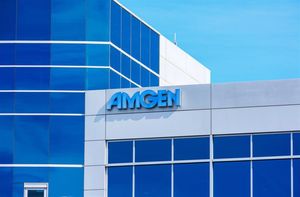– Trial met primary endpoint, with statistically significant reductions in liver fat observed in all HU6 treatment groups –
– In addition to robust liver-centric effects, HU6 resulted in fat-selective weight loss with preservation of skeletal muscle mass; potential to address the metabolic dysfunction underlying MASH –
– HU6 was well tolerated in M-ACCEL, with 450 patients treated to date –
CHARLOTTESVILLE, Va. and SOUTH SAN FRANCISCO, Calif., Nov. 07, 2025 (GLOBE NEWSWIRE) -- Rivus Pharmaceuticals, Inc., a clinical-stage biopharmaceutical company dedicated to treating obesity and associated cardiometabolic diseases, today announced the presentation of new clinical data from the Phase 2 M-ACCEL trial evaluating HU6 in patients with MASH (metabolic dysfunction-associated steatohepatitis). These data will be featured in a late-breaker oral presentation at the American Association for the Study of Liver Diseases (AASLD) The Liver Meeting® 2025 being held November 7-11, 2025, in Washington, DC.
These results build on the positive topline results announced by Rivus in June 2025, showing that the M-ACCEL trial met its primary endpoint, with statistically significant reductions in liver fat content at six months versus placebo (p<0.005) across all three HU6 treatment groups. 50-58% of patients treated with HU6 achieved a ≥30% reduction in liver fat, which was also statistically significant (p<0.005 for all doses versus placebo).
“MASH is a serious, obesity-driven disease that can lead to cirrhosis, liver failure and premature death,” said Mazen Noureddin, M.D., Professor of Medicine, Houston Methodist Hospital and Co-Chairman of the Board of the Summit and Pinnacle Clinical Research Networks. “In the M-ACCEL study, a majority of patients treated with HU6 achieved 30% or greater reduction in liver fat, which has been shown to be a clinically meaningful result associated with MASH resolution and fibrosis improvement. In addition to the robust liver-centric effects, HU6 treatment resulted in fat-selective weight loss with preservation of skeletal muscle mass, which may address the metabolic dysfunction underlying MASH. The favorable efficacy, safety, and tolerability profile of this oral investigational therapy supports HU6’s potential long-term use in treating individuals living with this chronic disease.”
M-ACCEL also met a number of secondary endpoints, including reductions in body weight and body fat, with selectivity for abdominal visceral (versus subcutaneous) fat, while preserving skeletal muscle mass, supporting HU6’s potential to address the metabolic dysfunction underlying MASH.
“There is a real need for novel therapies with new mechanisms for treating MASH as well as other chronic diseases associated with obesity,” said David Grainger, Ph.D., Chairman of Development, Rivus Pharmaceuticals. “Across three Phase 2 trials, all of which met their primary endpoints, HU6 has consistently demonstrated a unique tolerability profile with the potential to address the need for a long-term treatment for what are typically chronic diseases. Given the competitive efficacy and safety profile of HU6 as a novel MASH therapeutic, we are eager to initiate our next trial to address the growing need for new treatment options.”
At the six-month endpoint in M-ACCEL, the pre-specified modified intent-to-treat (mITT) analysis of 228 patients showed:
- Liver fat reduction: Primary endpoint met as HU6 showed a statistically significant reduction in liver fat compared to placebo (by least-squares mean difference -29.4%, -31.2%, -27.0% for 150, 300, and 450 mg doses, respectively, versus -6.7% with placebo; p<0.005 for each versus placebo). Approximately two-thirds of patients had Type 2 diabetes at baseline; HU6 efficacy was similar between diabetic and non-diabetic patients.
- Responder rate: Majority of patients achieved ≥30% liver fat reduction, with 57%, 58%, and 50% of patients achieving a response following 150, 300, and 450 mg doses, respectively, versus 22% for placebo (p<0.005).
- Weight loss: HU6 at 300 mg and 450 mg significantly reduced total body weight and body fat (-2.4%, or -2.6 kg, at 450 mg). Weight loss was entirely fat-selective, with lean and skeletal muscle mass preserved. This is in contrast to incretin-based therapies, which have been shown in clinical studies to reduce lean muscle mass.
- Abdominal visceral fat reduction: ~2:1 selectivity for abdominal visceral fat, which is strongly associated with cardiometabolic risk, versus abdominal subcutaneous fat.
- Safety and tolerability profile: HU6 was well tolerated with no treatment-related serious adverse events. The most common class of adverse events was gastrointestinal disorders (14% with HU6 versus 16% with placebo). Low discontinuation rate (≤5%) due to treatment-emergent adverse events.
Rivus plans to initiate the Phase 2 AMPLIFY trial in MASH to confirm dosing prior to future late-stage clinical trials for HU6. To date, approximately 450 patients have been treated with HU6.
AASLD oral presentation details are as follows:
Abstract Title: HU6 Oral Investigational Therapy Reduces Liver Fat and Improves Adiposity Markers in Adults with MASH: Top-line Results from a Phase 2 Randomized Placebo-Controlled Trial (M-ACCEL)
Late-Breaking Abstract Number: 5005
Format: Oral Presentation
Presenter: Mazen Noureddin, M.D., Professor of Medicine at Houston Methodist Hospital and Co-Chairman of the Board of the Summit and Pinnacle Clinical Research Networks
Presentation Date and Time: Monday, November 10, 2025, 2:00 – 2:15 p.m. ET
A copy of the AASLD presentation will be available after the oral presentation session ends under “Clinical Data and Scientific Publications” in Our Science section of Rivus’ website.
About the Phase 2 M-ACCEL Trial
The randomized, double-blind, placebo-controlled, parallel-group Phase 2 M-ACCEL trial (ClinicalTrials.gov: (NCT05979779) evaluated HU6 at 150 mg, 300 mg, and 450 mg once daily for 26 weeks in adults with MASH. Participants were randomized 2:1:2:2 (placebo:HU6 150:HU6 300:HU6 450). Eligible patients had liver fat ≥8% by MRI-PDFF and a VCTE score of 7–15 kPa, targeting fibrosis stages F2-F3. The primary endpoint was percent change from baseline in liver fat as measured by MRI-PDFF at six months. Secondary and exploratory endpoints included proportion of patients achieving ≥30% liver fat reduction, changes in body weight, body composition, glycemic control, blood pressure, and metabolic and inflammatory markers.
About MASH (Metabolic Dysfunction-Associated Steatohepatitis)
MASH (formerly known as nonalcoholic steatohepatitis or NASH) is a serious liver disease that often progresses to cirrhosis, liver failure, hepatocellular carcinoma, the need for liver transplantation, and premature death. MASH is caused by an accumulation of excess fat cells in the liver and is closely linked to obesity. MASH is an independent driver of cardiovascular disease, the leading cause of mortality for patients, underscoring the close association between MASH and a patient’s overall cardiometabolic health. There is a need for therapies that address both hepatic and systemic metabolic dysfunction.
Approximately 5% of U.S. adults have MASH,1,2 which is rapidly becoming the leading cause of liver transplantation. With obesity rates rising worldwide, MASH is predicted to have a significant impact on global health.
About Controlled Metabolic Accelerators (CMAs)
Rivus is advancing a new class of oral medicines called Controlled Metabolic Accelerators (CMAs) for obesity and associated cardiometabolic diseases. Rivus’ CMAs are designed to induce sustained, fat-selective, muscle-preserving weight loss. These oral small molecule therapeutics are engineered to safely increase resting metabolic rate and result in increased energy expenditure primarily from fat. Leveraging the natural metabolic process of mitochondrial uncoupling, CMAs increase the resting metabolic rate in a manner that is precision-controlled, in clinical trials to date, and imperceptible to the patient. Rivus’ lead CMA HU6 is in Phase 2 clinical development.
About HU6
HU6 (ANT activator) is an oral investigational therapy designed to treat obesity and associated cardiometabolic diseases. HU6 is engineered to safely increase resting metabolic rate in a precision-controlled and imperceptible manner, resulting in increased expenditure of energy, primarily from fat. Across three Phase 2a clinical trials, HU6 has demonstrated positive results and a well-tolerated safety profile in MASH (metabolic dysfunction associated steatohepatitis), MASLD (metabolic dysfunction-associated steatotic liver disease), and HFpEF (heart failure with preserved ejection fraction). To date, approximately 450 patients have received HU6 as part of the clinical development program.
About Rivus Pharmaceuticals
Rivus Pharmaceuticals, Inc. is a clinical-stage biotechnology company advancing novel medicines for obesity and associated cardiometabolic diseases. A leader in mitochondrial biology, Rivus is developing a new class of investigational therapies called Controlled Metabolic Accelerators (CMAs), which are oral small molecules designed for sustained, fat-selective, muscle-preserving weight loss. Rivus’ lead candidate HU6 (ANT activator) has demonstrated positive results in three Phase 2 clinical trials across MASH (metabolic dysfunction associated steatohepatitis), MASLD (metabolic dysfunction-associated steatotic liver disease) and HFpEF (heart failure with preserved ejection fraction). In addition to HU6, Rivus is developing a pipeline of preclinical therapies, including RV300 (oral GLP-1), for obesity and cardiometabolic diseases. Follow Rivus on LinkedIn and X and visit www.rivuspharma.com.
Company Contact:
Amy Figueroa, CFA
Rivus Pharmaceuticals
afigueroa@rivuspharma.com
Media Contact:
Matt Wright
Real Chemistry
mwright@realchemistry.com
References
1. Younossi ZM, Golabi P, Paik JM, Henry A, Van Dongen C, Henry L. The global epidemiology of nonalcoholic fatty liver disease (NAFLD) and nonalcoholic steatohepatitis (NASH): a systematic review. Hepatology. 2023;77(4):1335-1347. doi: 10.1097/HEP.0000000000000004.
2. Harrison SA, Gawrieh S, Roberts K, et al. Prospective evaluation of the prevalence of non-alcoholic fatty liver disease and steatohepatitis in a large middle-aged US cohort. J Hepatol. 2021;75(2):284-291. doi: 10.1016/j.jhep.2021.02.034.







